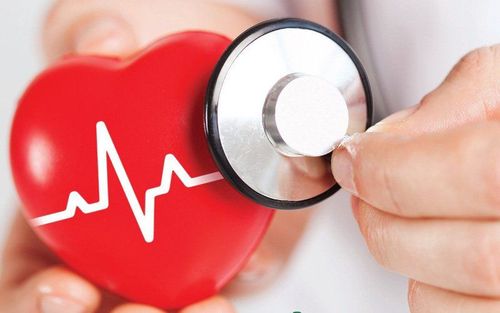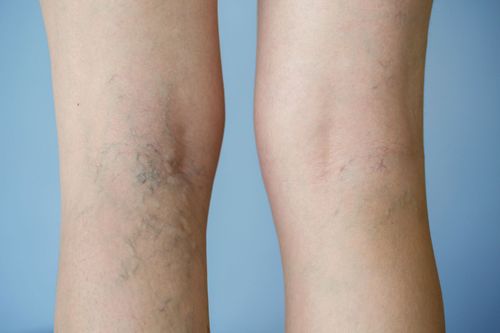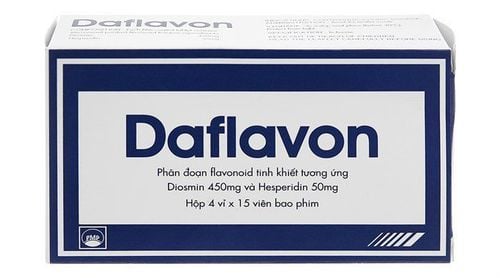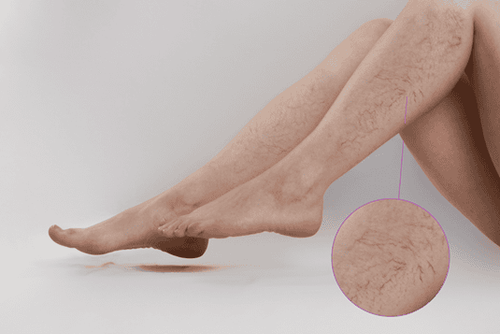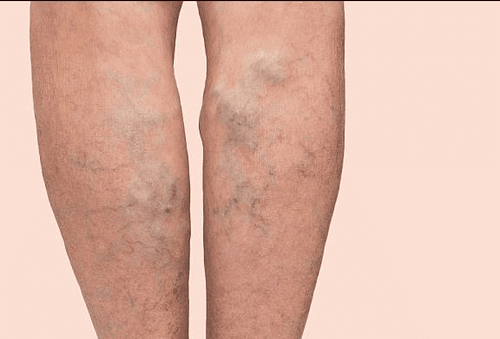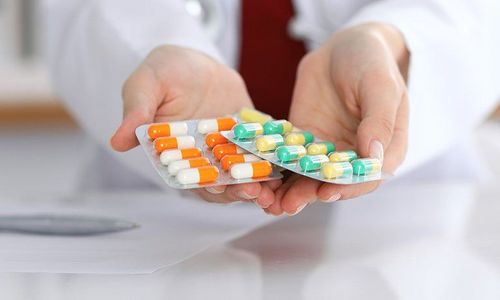This is an automatically translated article.
The article is professionally consulted by Master, Doctor La Thi Thuy - Cardiovascular Center - Vinmec Central Park International General Hospital.Varicose veins are a group of diseases of the peripheral blood vessels. The disease not only affects aesthetics but also affects daily life, many cases have to be amputated because of severe inflammation.
1. What is varicose veins?
Chronic venous insufficiency is a common condition caused by reflux of blood in the veins, causing varicose veins (d > 3 mm), reticular veins (d = 1-3 mm) and spider veins. (d < 1mm). In the lower extremities, venous reflux can be in the superficial or deep veins. The superficial vein involves the great saphenous vein, the minor saphenous vein and its branches between the skin and the muscle fascia and can be treated surgically. Deep veins involve the femoral veins and other deep veins that are located below the fascia and are difficult to treat with interventional therapy.Mild cases of varicose veins are only uncomfortable or unsightly, but severe can lead to leg edema and eventually ulceration.
2. Lower extremity venous system
DISCUSSION OF THE LOWER EXTRACTIVE SYSTEM: The venous system ensures to receive blood from the periphery to return to the heart, through two systems:Superficial venous system, responsible for 1/10 of the blood returning to the heart Deep vein system, ensures responsible for 9/10 of the amount of blood to the heart. These two venous systems, connected by the communicating and perforating veins
Mechanism of transporting blood from the veins of the lower extremities to the heart:
Thanks to the push in the legs when walking. Thanks to the suction when breathing. Thanks to the one-way valve system to prevent backflow.
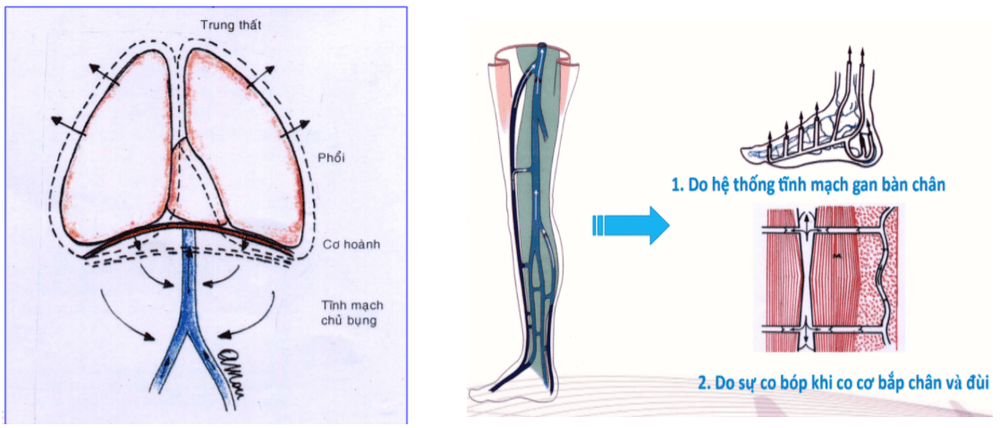
Hệ tĩnh mạch đảm bảo nhận máu từ ngoại biên đưa trở về tim
3. Causes of varicose veins
Venous reflux occurs when there is a failure of the valves in the veins in the saphenous veins, blocking blood flow in the branches of the saphenous veins. Normally, venous pressure in the extremities is regulated by these valves. Valves that no longer function cause an increase in venous pressure and can cause symptoms. If the blood pumping mechanism in the legs is poor, it can cause more severe symptoms.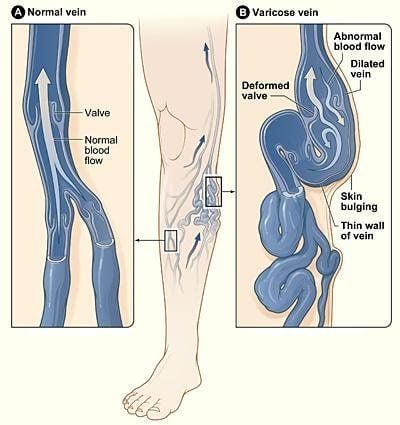
Trào ngược tĩnh mạch xảy ra khi có sự suy van tĩnh mạch
Genetic factors: According to statistics, about 80% of patients with varicose veins have a parent with the disease. Gender: The incidence is higher in women than in men due to the influence of female hormones, pregnancy and preference for wearing high heels. Age: The older you are, the higher your risk of varicose veins. Occupation: occupations that have to stand for too long or be sedentary such as teachers, salespeople, office workers,... Body weight: exerts an impact on the legs, causing blood to rush to the legs Use Birth control pills are also a risk factor. Infectious diseases, tumors, complications after surgery with thrombosis, vasculitis and other procedures such as casts or lying immobile for a long time in fractures... can also lead to varicose veins.
4. Symptoms of varicose veins
Feeling of heaviness and fatigue in the lower extremities when standing for too long Occasional swelling in the legs and feet Pain when walking a lot Swelling and purple in the legs and insteps Numbness, itching in the legs, heaviness more likely dermatitis, sclerosis, ulcers Only when the disease has progressed to a severe stage, the patient will seek treatment. At that time, the disease caused many complications and it was difficult to completely overcome. Therefore, when detecting signs of the disease, immediately go to medical facilities for timely examination and treatment.5. Venous valve failure stage
The CEAP clinical classification has 7 groups (from C0 to C6) that are classified according to the presence of symptoms.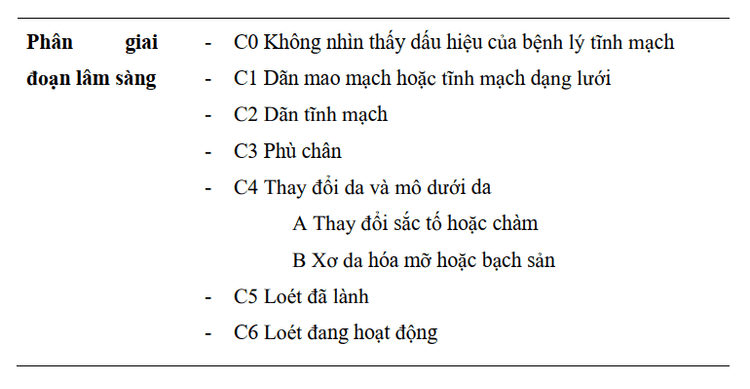
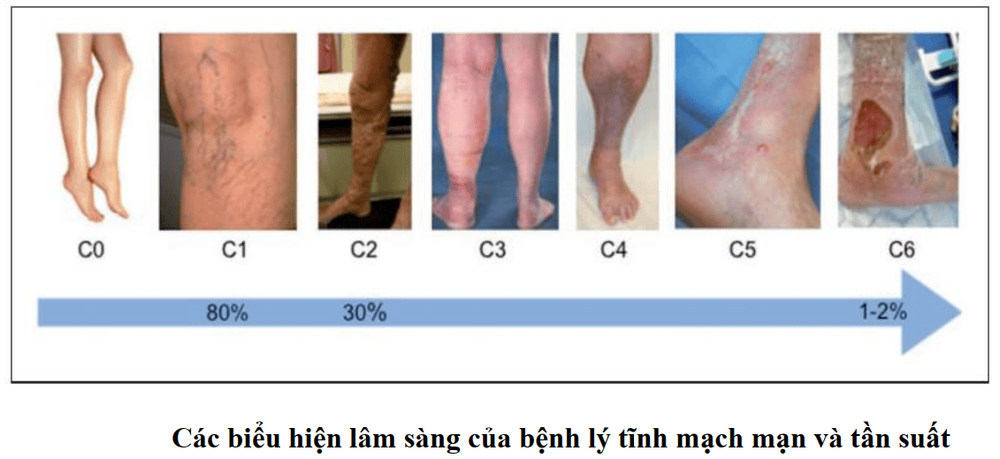
6. Treatment of varicose veins
Depending on the individual patient and the progression of the disease, the doctor may prescribe an individual measure or a combination of the following methods:Conservative treatment
Use compression bandages and compression stockings: Bandages and stockings can The effect is on the muscles, creating a great pressure at the bottom and helping the venous valves to close, thus allowing blood to flow more easily to the heart. These two tools help slow down the progression of the disease, prevent disease recurrence and support surgical treatment measures. Use of drugs: use anticoagulants, pain relievers and intravenous support drugs exactly as prescribed by a specialist. Sclerotherapy: a solution will be injected into the vein causing an inflammatory reaction combined with venous compression, preventing blood from entering the dilated vein, resulting in the vein becoming fibrous and no longer functioning. Surgery: applied to superficial vein damage, the dilated vein will be removed through small incisions. The surgery usually takes about 5-10 minutes. After surgery, the patient will be put on a compression bandage and lie motionless in bed for about three days.
Endovascular interventional treatment:
In the United States, venipuncture has been replaced by transcatheter endovascular thermal ablation (EVTL). This method uses laser energy or high frequency waves. EVTL is performed under ultrasound guidance and local anesthesia. During the EVTL procedure, a catheter is inserted into the saphenous vein a few centimeters from the saphenous-femoral junction. The catheter is connected to an external generator, and when the catheter is withdrawn from the vein, heat energy is released where the catheter is inserted. As a result, where the refluxed vein is removed, blood flows only through other “healthy” veins.
After endovascular intervention, ultrasound examination in the first week, focusing on the saphenous-femoral junction.
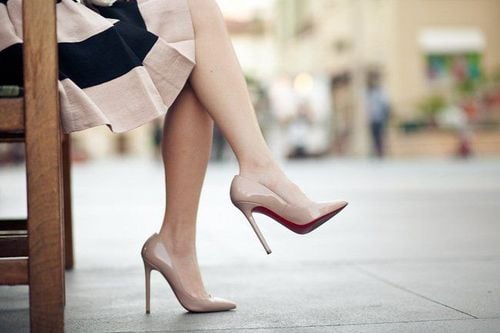
Hạn chế đi giày cao gót
7. Prevention of varicose veins
Do not walk or sit in one place for too long. When resting, you should raise your feet. Eat a lot of fiber, vitamins, and drink plenty of water. Increase exercise and exercise, walk for about 30 minutes a day. Massage and soak your feet in warm water. Avoid wearing high heels. Limit the use of oral contraceptives.8. Prognosis
There is no definitive cure for varicose veins, including surgery, recurrence is very common. People with venous ulcers have an increased risk of morbidity and poor quality of life. Unlike the deep venous system, superficial venous thrombosis is rare and rarely causes pulmonary embolism. Untreated varicose veins are cosmetically unsightly and this is the reason why people seek treatment.9. Complications
Venous ulcers Pain Poor aesthetics.Please dial HOTLINE for more information or register for an appointment HERE. Download MyVinmec app to make appointments faster and to manage your bookings easily.




